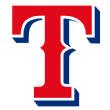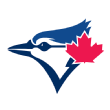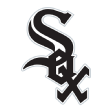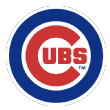I tweeted the other day that I had narrowed my list for the top 100 prospects to 113, joking that I needed a quantum physicist's help to fit them all. (To Twitter's credit, several physicists did chime in.) This column of those who "just missed" typically includes 10 players, unranked except for one or two (I think I always identified player No. 101), but this year, I ranked 101 to 110 and added some more who got some support from scouts or execs when I circulated my list.
Editor's note: Ages are as of July 1, 2019. Players with experience in foreign major leagues, such as Japan's NPB or Korea's KBO, are ineligible for these rankings.
 101. Everson Pereira, OF, New York Yankees
101. Everson Pereira, OF, New York Yankees
Age: 18 (4/10/2001)
Bats: R | Throws: R
6 feet | 191 pounds
I feel like Pereira would have made the list had he just stayed healthy the whole summer so that he could have produced more and also been seen by more scouts and execs. Pereira took in $1.5 million when he signed in July 2017, then made his pro debut last summer in the Appy League, where he and Wander Franco were the only 17-year-olds in the short-season circuit. Pereira struggled with contact, striking out in nearly a third of his at-bats, but showed great instincts in center and flashes of the plus raw power and 60 speed that marked him as a top prospect before he signed.
He was so young to be at that level that his performance doesn't tell us that much, but the raw tools and the fact that he still hit .263/.322/.389 despite his youth mark him as a potential top-50 guy for next year.
 102. Jordan Balazovic, RHP, Minnesota Twins
102. Jordan Balazovic, RHP, Minnesota Twins
Age: 20 (9/17/1998)
Bats: R | Throws: R
6-foot-4 | 175 pounds
Balazovic was the Twins' fifth-round pick in 2016 out of a high school in Mississauga, Ontario. (That's in Canada, folks.) He spent two unremarkable years in the Gulf Coast League before his coming-out party in 2018, when he blew scouts away in his 11 starts for low-A Cedar Rapids, working 94-95 mph with plus control of a four-pitch mix, a future plus slider, a very athletic body and still some projection to his build. He started to fill out last offseason, leading to the bump in velocity. He still needs to improve his changeup to become less vulnerable to lefties and to go out and show he can hold this stuff over a longer season.
 103. Ryan Weathers, LHP, San Diego Padres
103. Ryan Weathers, LHP, San Diego Padres
Age: 19 (12/17/1999)
Bats: L | Throws: L
6-foot-1 | 200 pounds
Weathers was a tough omission because I liked him in the draft and ranked him highly, but I couldn't fit everyone I wanted to include in the top 100, and I got some tepid reports on Weathers from pro scouts, mostly questioning the upside. His stuff is fine for his age, and his command is very advanced. I heard some comments about the body, but I have no doubt about his athleticism, even though you might assume otherwise from his appearance. I still think he's a midrotation starter whose command and feel to pitch will help his stuff play up, but maybe he jumps onto the list after his first pro year.
 104. Colton Welker, 3B, Colorado Rockies
104. Colton Welker, 3B, Colorado Rockies
Age: 21 (10/9/1997)
Bats: R | Throws: R
6-foot-2 | 195 pounds
Welker just keeps hitting, although there's always the skepticism about the hitter's parks in which Rockies prospects play. Welker has gone through Grand Junction, Asheville and Lancaster -- probably the best hitter's parks in their respective leagues -- so far as a pro. His bat-to-ball skill is real despite a lot of quirks in the swing that should impede him -- from how he's hard to his front side to the lack of any sort of hand trigger to how uphill his path through the ball can get. He's a 45 defender at third with great hands but limited range. He'll move up to the Eastern League this year, playing for Hartford, the least hitter-friendly park in Colorado's system, against better pitching, and I think if he hits yet again as he has for three years running, much of the skepticism about his bat will melt away.
 105. Joe Palumbo, LHP, Texas Rangers
105. Joe Palumbo, LHP, Texas Rangers
Age: 24 (10/26/1994)
Bats: L | Throws: L
6-foot-1 | 168 pounds
Palumbo's velocity spiked going into 2017, but his elbow gave out after just three starts, and he didn't return until mid-2018. The good news is that his velo was back, and he's working with a plus fastball/plus curveball combination and throwing strikes as well. Palumbo was signed out of a men's league because he was ineligible to pitch for his high school, and at the time was working in the upper 80s but with projection and a good delivery. He has the third pitch to start but needs to show he can hold up for a full year, as he has never thrown 100 innings in any pro season. He could move very quickly this year if he does, after finishing 2018 in Double-A.
 106. Estevan Florial, OF, New York Yankees
106. Estevan Florial, OF, New York Yankees
Age: 21 (11/25/1997)
Bats: L | Throws: R
6-foot-1 | 185 pounds
The story with Florial hasn't changed, although his 2018 season was marred by injuries, too: He doesn't recognize pitches well enough to get to his tools. Florial has bat speed, power, running speed, athleticism, quick twitch and all the tools that glitter, but his ability to pick up pitch types is not good enough to put him into the top 100. He also suffered from a broken hamate last year, which saps hand strength for some time after the injury has healed, and he has some mechanical issues in his swing, such as the way he can drop his back side, to iron out as well. But ultimately, this will come down to pitch recognition, and the Yankees just hired a coach, Dillon Lawson, who specializes in that precise area.
 107. Danny Jansen, C, Toronto Blue Jays
107. Danny Jansen, C, Toronto Blue Jays
Age: 24 (4/15/1995)
Bats: R | Throws: R
6-foot-2 | 225 pounds
Jansen is an offense-first catcher whose receiving and framing are relative weak spots in his game and who has had a hard time staying healthy, going back to when Jays scout Wes Penick first drafted Jansen out of a Wisconsin high school. The good news is that when Jansen plays, he hits. He's short to the ball with a lot of strength for power that I think will play out as above average if not plus, probably 18 to 22 homers a year with a catcher's workload, and he has posted a .396 OBP in the minors over the past two seasons.
He's below average behind the plate, but not so much that he'll have to move off the position, and his bat should more than mitigate whatever his defense costs the team. The bigger concern is his durability: He has never caught 100 games in any season, peaking the past two years at 98 and 85, and he has had two broken bones in his hand (one a hamate) and major knee surgery already. At some positions, this wouldn't be such a concern, but catching can wear down a lot of players who look durable, and Jansen might not be able to handle that workload.
 108. Brusdar Graterol, RHP, Minnesota Twins
108. Brusdar Graterol, RHP, Minnesota Twins
Age: 20 (8/26/1998)
Bats: R | Throws: R
6-foot-1 | 180 pounds
To a man, every scout or exec I asked about Graterol used some declension of the word "reliever" in his response, such as "relieverish." He has a mid-90s fastball, but he'll touch 100 and then show you 90-91, with a power slider, from a 6-foot-1 guy with a stocky build who goes max effort to get to that stuff. He did miss 2016 with Tommy John surgery, although that hardly is unique to high-effort guys at this point. And he had success up through high-A before turning 20 in August. Scouts see no projection here and a delivery that probably points to a power-reliever role.
 109. Dane Dunning, RHP, Chicago White Sox
109. Dane Dunning, RHP, Chicago White Sox
Age: 24 (12/20/1994)
Bats: R | Throws: R
6-foot-4 | 200 pounds
Dunning might have made the top 100 had he finished the season healthy, but he was shut down in July with a moderate elbow sprain that has not required surgery yet. Dunning works with a low-90s fastball and will show a plus curveball, solid-average slider and average-ish changeup, and his delivery pointed to a starter's role long-term. He hasn't pitched much as a starter, having worked in relief for the University of Florida, but the arsenal and command are there for at least a back-end guy, maybe more like a No. 3 as the breaking stuff improves. Now he needs to show he is healthy.
 110. Nico Hoerner, SS, Chicago Cubs
110. Nico Hoerner, SS, Chicago Cubs
Age: 22 (5/13/1997)
Bats: R | Throws: R
6-foot-1 | 200 pounds
Hoerner is more of a skills guy than a tools guy, as the Cubs' first-round pick in 2018 out of Stanford doesn't have a six anywhere on his scouting report. He's probably going to end up at second base, although his instincts are so good he might beat the odds and stay at short, and he's an elite baserunner who looks like he's going to steal bases at a very high success rate. Questions about his position and his history of running short at-bats (and thus not walking much for a guy without power) kept him off the 100.
And four more who came close:
Grant Lavigne, 1B, Colorado Rockies: I know a few teams thought Lavigne -- who played high school baseball in New Hampshire -- was a fringe first-round candidate last year because of his natural feel to hit, even though he was already big at 18 and limited to first base. The Rockies took him in the supplemental round, 42nd overall, and sent him to short-season Grand Junction (since they don't have a complex-level team in the Arizona League), where he hit .350/.477/.519, leading the league in on-base percentage as one of its youngest regulars.
I'm hard on first-base prospects because replacement level there is so high, but Lavigne gets a lot of comparisons to a young Anthony Rizzo and might be the exception.
Nick Madrigal, 2B, Chicago White Sox: The fourth overall pick in last year's draft was probably the safest bet after Casey Mize, but Madrigal's upside is very limited. He's a second baseman with grade-35 power, which might really cap his ceiling at that of everyday regular. The hope is that the 5-foot-7 Madrigal's feel for hitting is so good that he'll hit .320 and make enough hard contact for 30 to 40 doubles a year. His pro debut showed the good and the bad; he struck out only five times in 173 plate appearances, mostly in full-season A-ball, but slugged .348 with a .045 ISO. That latter bit has to improve or he has to hit that .320-plus with a bunch of walks, or turn into Chase Utley on defense, to be more than just a regular.
Darwinzon Hernandez, LHP, Boston Red Sox: Hernandez really doesn't have the command to start -- or to make the top 100 -- just yet, but he's left-handed, sits 93-96, shows a power breaking ball and occasionally shows an average changeup. I was a little surprised by industry support for him, given his below-average control (he has never had a walk rate below 10 percent at any level), but he's a huge kid who just turned 22 in December and his stuff keeps improving.
Tony Gonsolin, RHP, Los Angeles Dodgers: Gonsolin was a reliever on the same St. Mary's team that produced current Brewers pitcher Corbin Burnes and also played the outfield, so his pitching was behind where you'd expect it to be at age 21, and he was still available in the ninth round for the Dodgers in 2016. He has had nothing but success as a starter in pro ball, with a four-pitch mix that includes a plus fastball and plus split-change, along with excellent control. Teams have been trying to pry him loose from the Dodgers in trades for a year, but L.A. seems to know what it might have here, either a midrotation starter or maybe a multi-inning power reliever.
